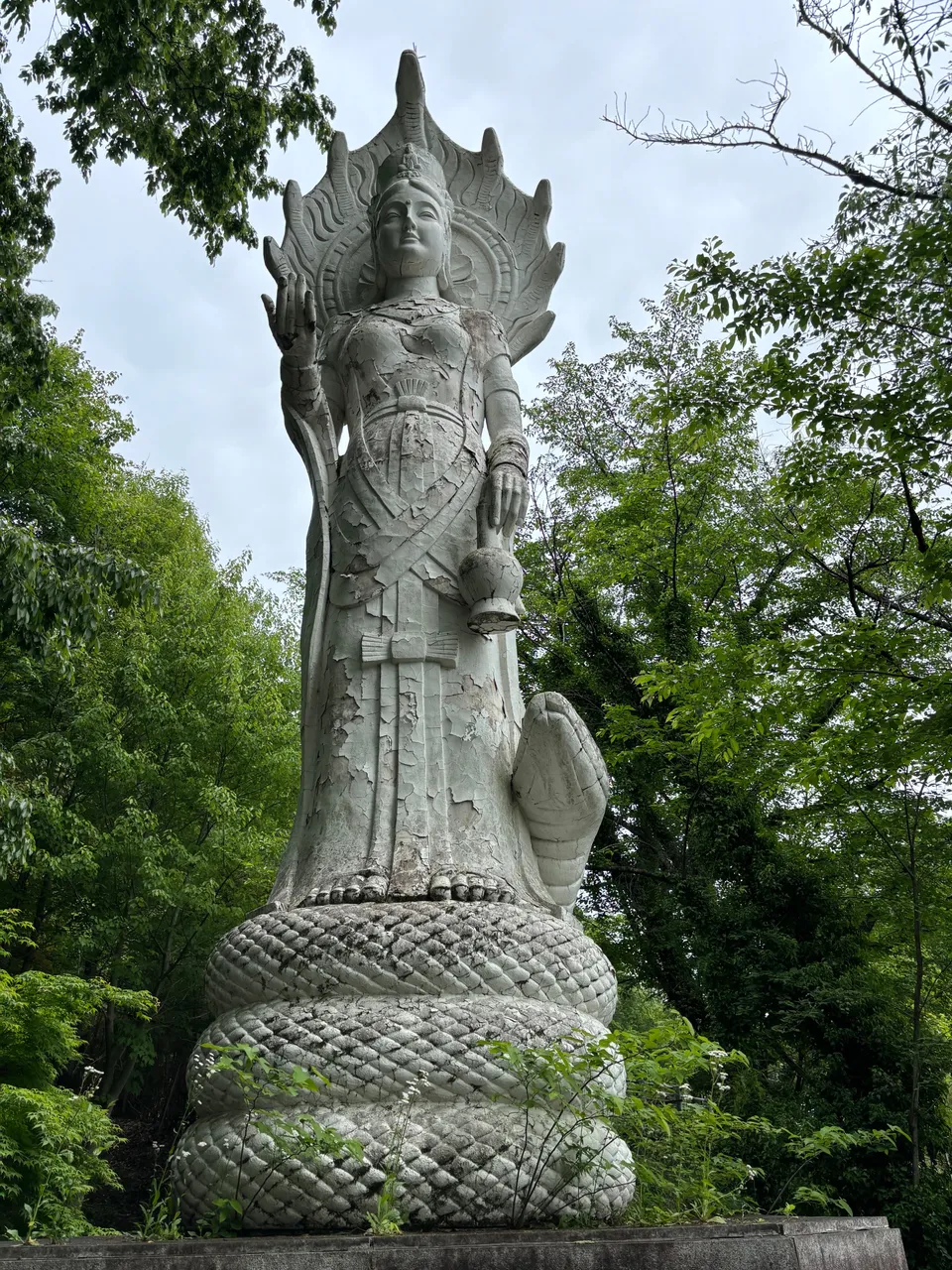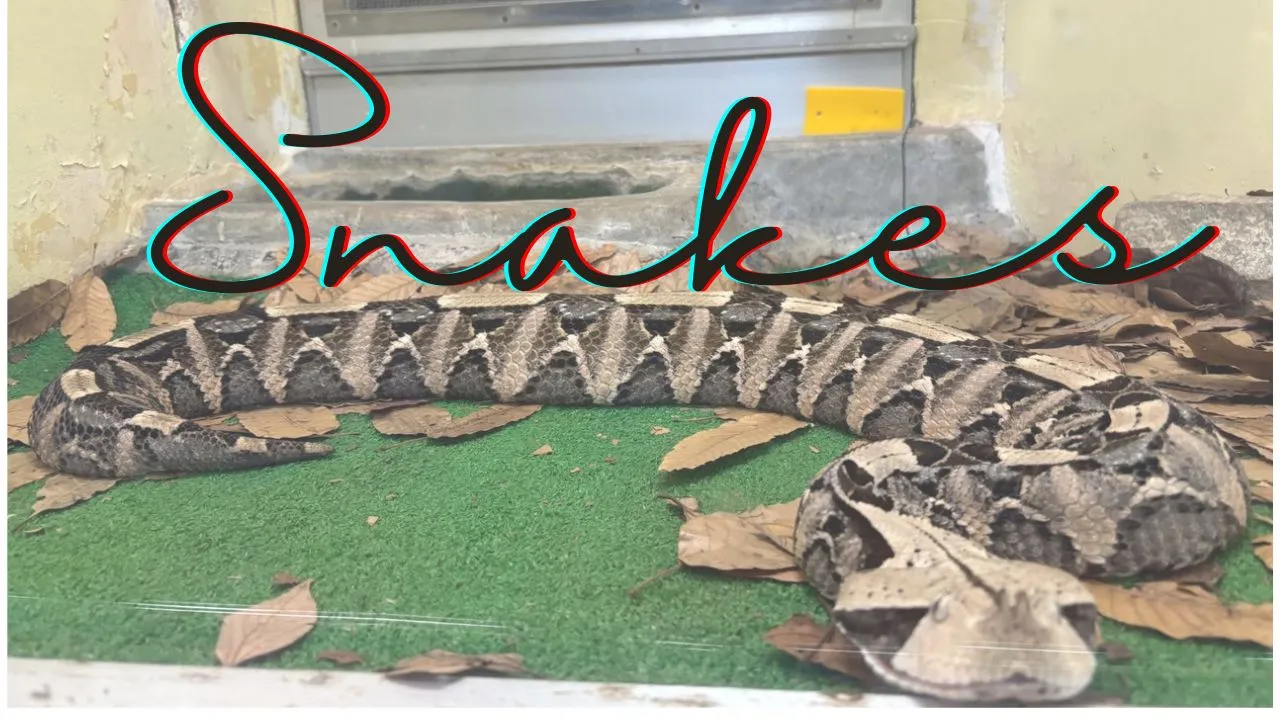
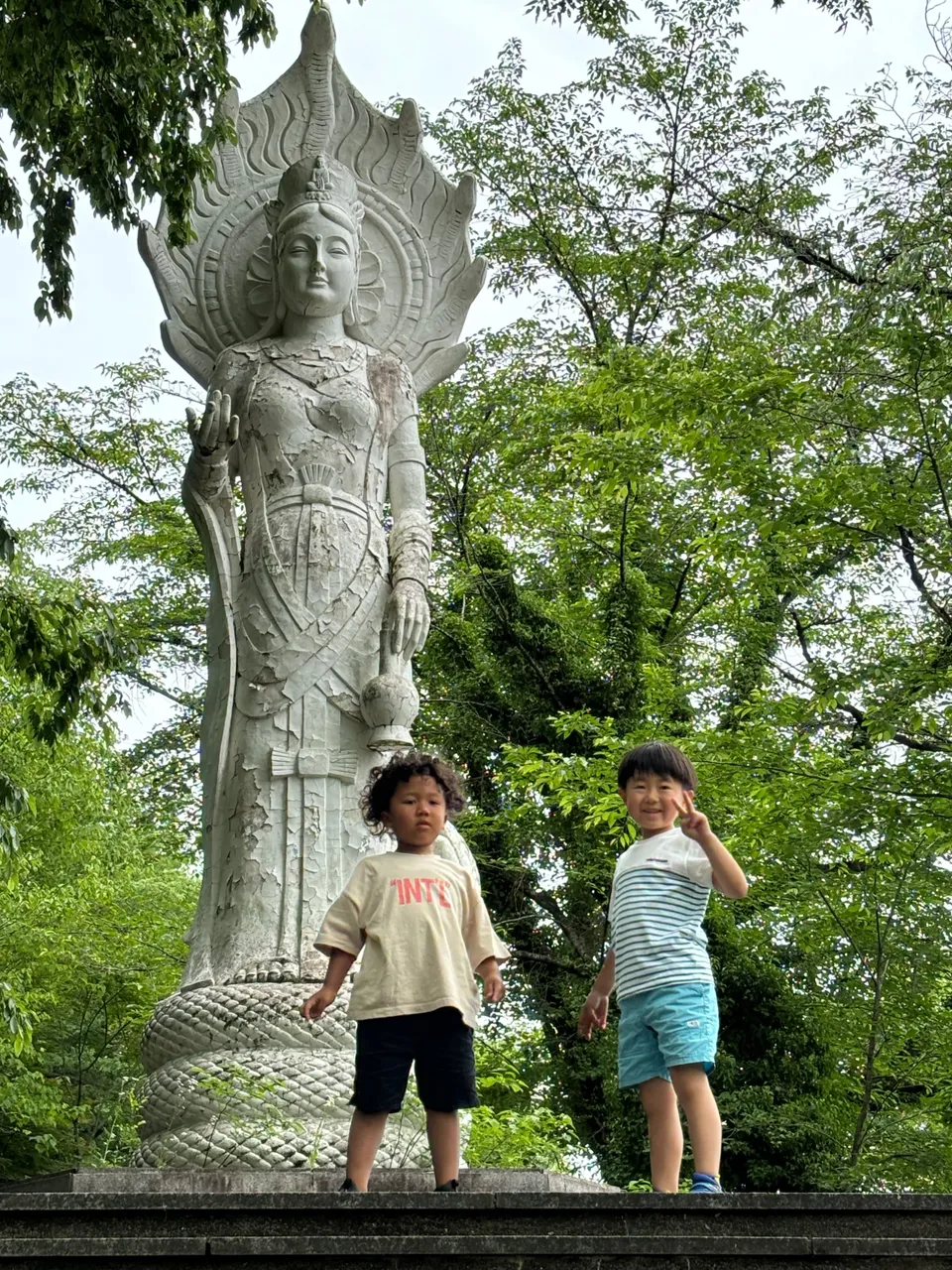
So recently, my youngest son got interested in snakes after a close encounter. So I thought is was only fitting to take him to see the variations of snakes up for viewing at the nearby snake center.
The snake center serves as an antivenom laboratory as Japan is home to several species of venomous snakes, the most notable being the mamushi and the habu. The mamushi, also known as the Japanese pit viper, is found throughout the country and is known for its potent hemotoxic venom, which can cause significant pain, swelling, and tissue damage. The habu, found predominantly in the Ryukyu Islands, has a neurotoxic venom that can lead to muscle paralysis and respiratory issues. Another species is the yamakagashi, which is mildly venomous but still poses a risk to humans. Out of the three, I have only seen the yamakagashi.
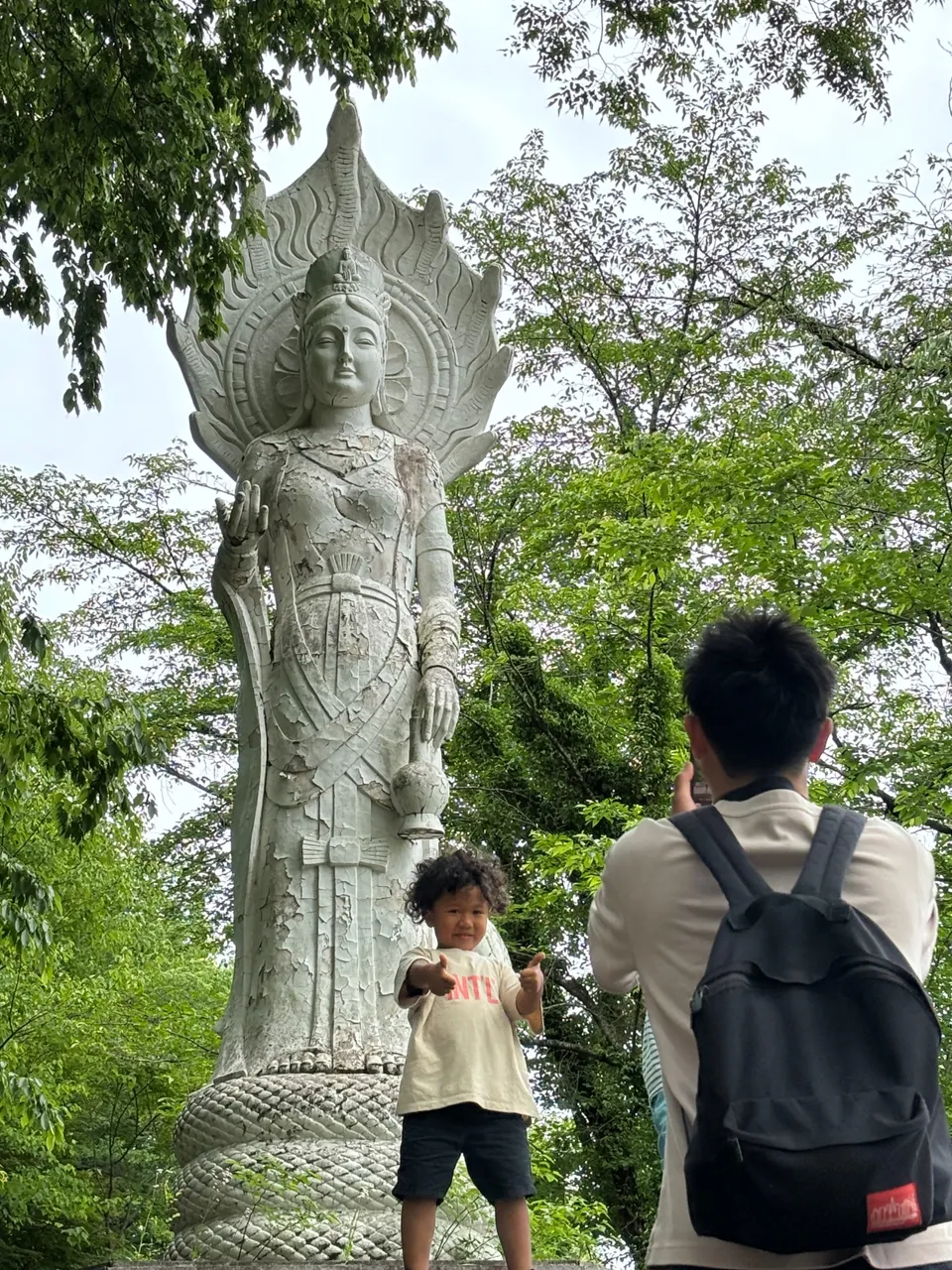
The snake center houses 100s of snakes from Cobras to Anacondas which aren't native to the island. The center also serves as religious grounds as a huge statue of Benzaiten can be seen atop a flight of stairs on a hill. There are also a few alters in which one can offer money and prayer for good fortune. Benzaiten is the Buddhist Goddess of all that flows: water, music, arts, love, wisdom, wealth and fortune. She is also know as the Goddess of creativity.
About Snakes and Buddhism
In Japanese Buddhism, snakes hold symbolic significance and are often associated with deities and spiritual concepts. One of the prominent figures is Benzaiten (also known as Benten). Benzaiten is often depicted with a white snake, symbolizing protection, wealth, and good fortune.
Snakes are also linked to the dragon, a creature that combines serpent and mythical qualities. Dragons in Japanese Buddhism are protectors of the Buddha and his teachings. They represent power, strength, and the ability to control water, which is vital for rice cultivation in Japan.
Furthermore, the snake's ability to shed its skin is seen as a symbol of rebirth and transformation, aligning with Buddhist themes of impermanence and the cyclical nature of life. Temples and shrines across Japan may feature snake imagery, emphasizing their cultural and spiritual importance.
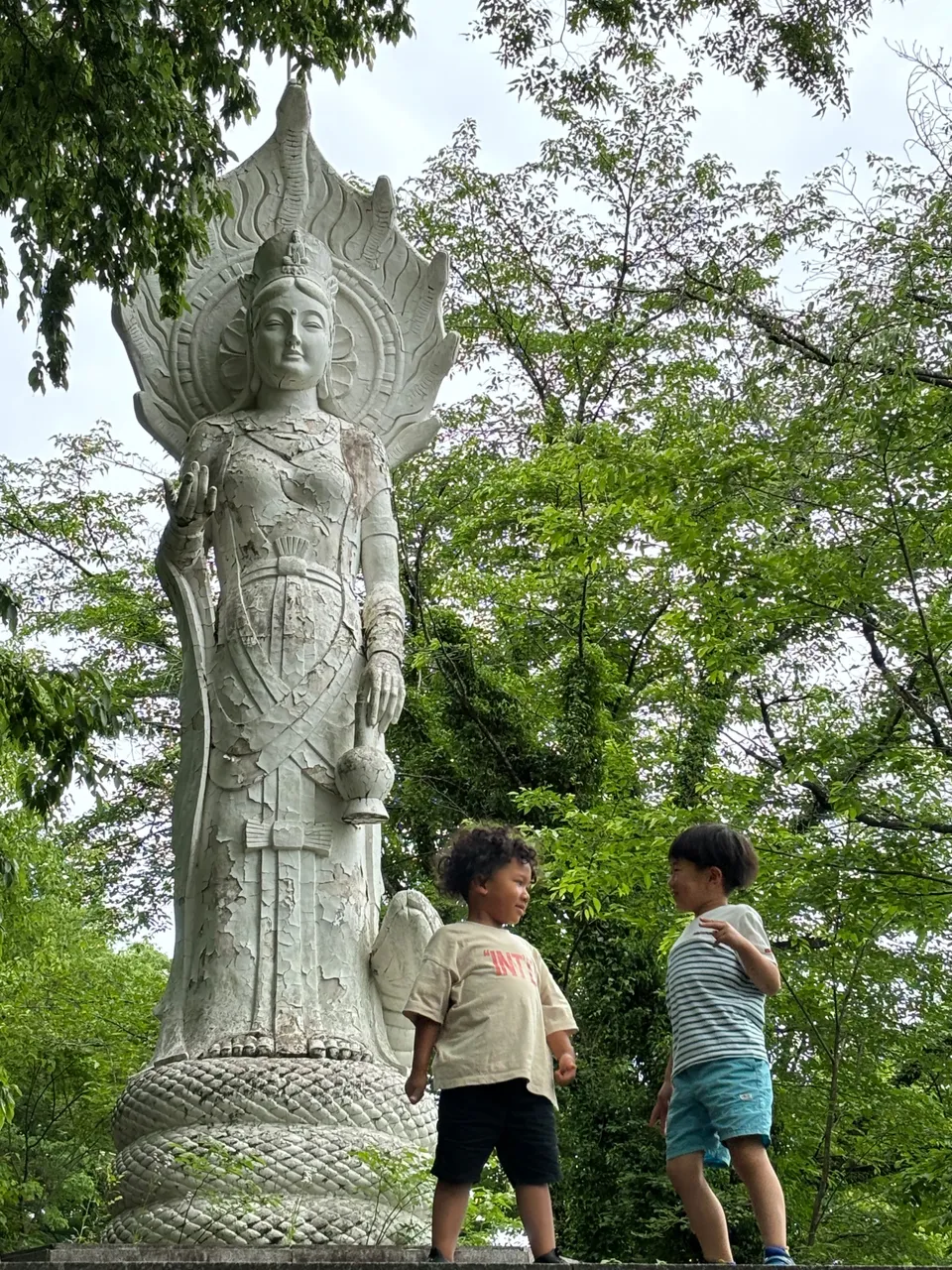
So how did my youngest get interested in snakes in the first place? Well it all started with a trip to a local park. We were playing tag and I stepped right pass a huge snake as I ran away from my son, but he spotted it and quickly dressed back and shouted "SNAKE". After that the snake slithered into some nearby bushes, frightened by the clamorous crowd of children. We watched the snake for well over an hour as it slithered from one side of the bush to the next, occasionally peaking out.
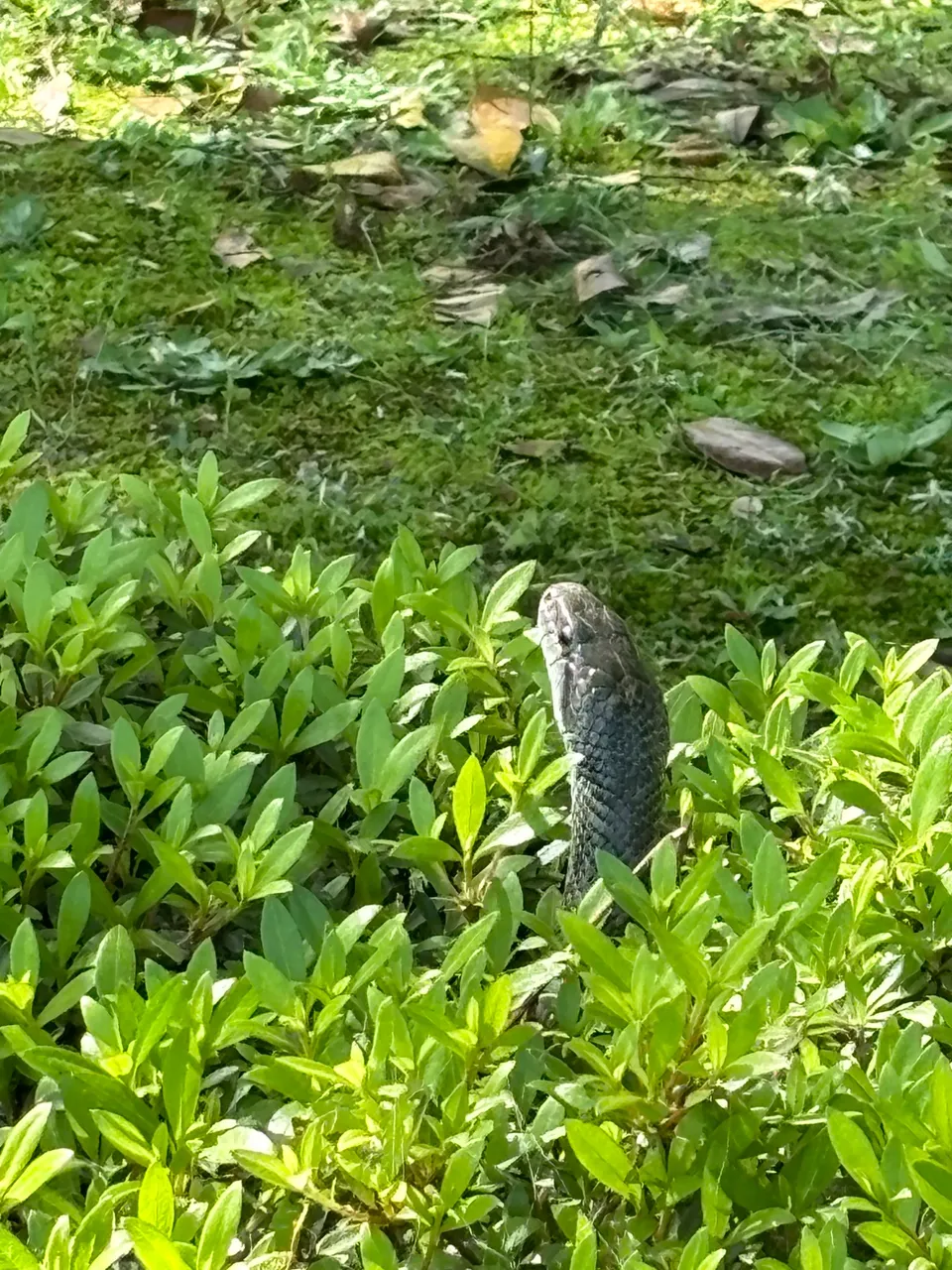
By park standards it was a pretty big snake, just look at the size of it's head compared to the kids in the background. I kept on telling my sons not to get too close or do any sudden movements as we weren't sure what kind of snake it was. I doubt it was poisonous based on it's behaviour but you never know.

At the snake center you knew for sure which ones were venomous, this Western diamondback rattlesnake for instance, just looking into it's eyes makes you know not to get close.
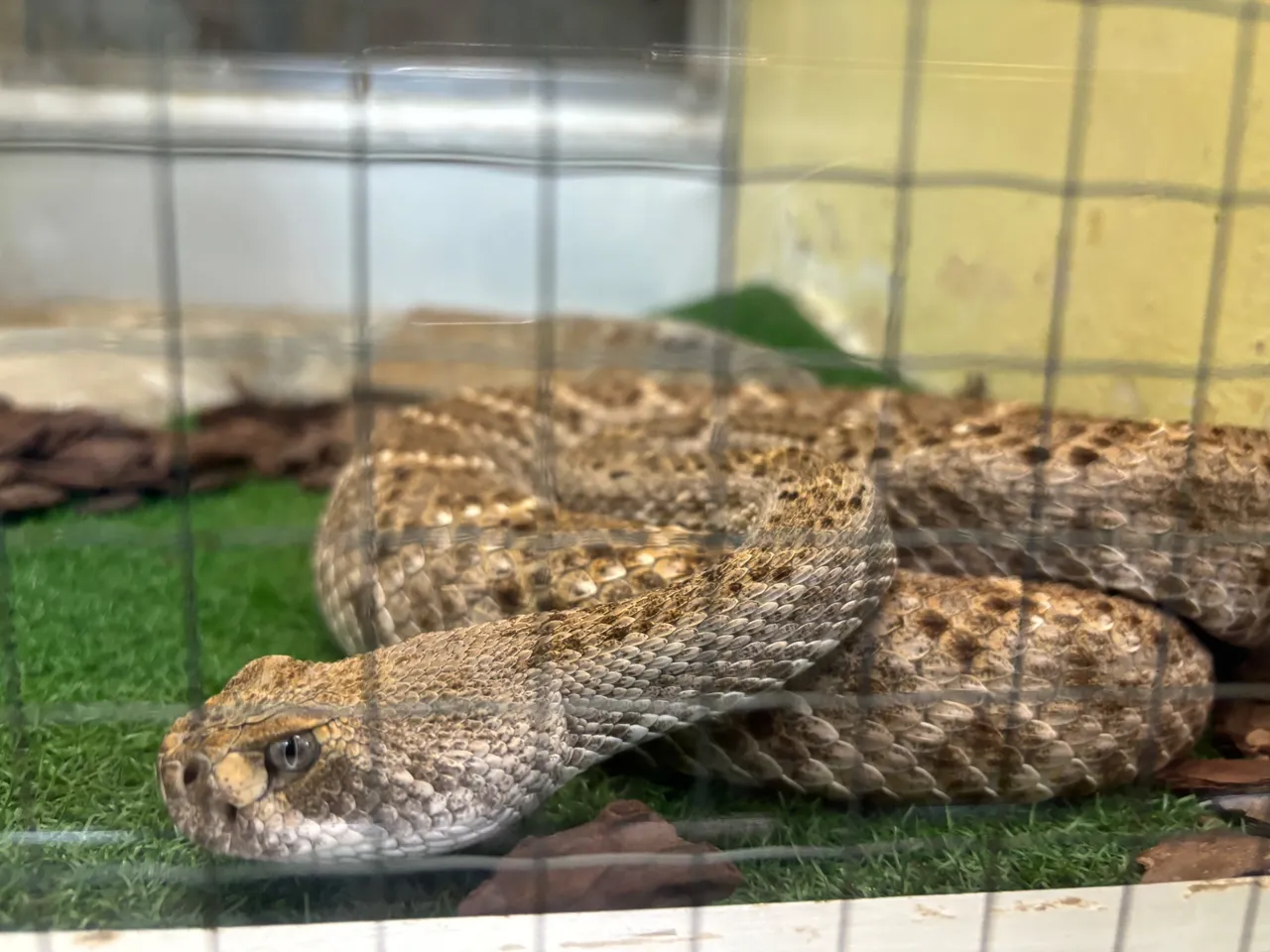
I find it amazing that some people can comfortably hold snakes. Not me, the feel of their skin and the movement of their ventral scales just feels so creepy and unreal. But I guess this guy in the picture below is the opposite. The snake center has a venom extracting showcase each day and it is this guys job. Based on his enthusiasm, I can tell he loves what he does. The snake he was extracting venom from was one the most venomous in Japan, the Habu, or Japanese pit viper.Zoom in on the audience, they are a few really engaged faces.

Below is a picture of a Gaboon viper, its horned looking nose makes it easy to distinguish from other vipers. Gaboon Vipers are known for their distinctive and beautiful coloration, with intricate patterns of browns, yellows, and purples that help them blend into the forest floor. They have a broad, triangular head and can grow quite large, often reaching lengths of up to 6 feet. Are they dangerous? Yes, but usually aren't very aggressive or stealthy. But of course, you would not want to be bitten by the Gaboon.

Now, my son is still fascinated by snakes. So much so that he asked me to draw a snake on his harm. Not sure what his nursery school teachers will think about it when they see it but meh. All in all the encounter was a good learning experience that brought us to down a rabbit hole to a world of snakes. Not literally, because that would be a nightmare.
So how about you..are you a snake gripper?
